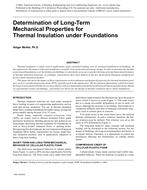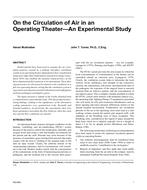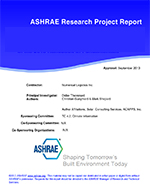The comfort, energy consumption, and dynamic response of a forced warm air, zoned heating system using a modulating gas-fired furnace was compared with the performance of a conventional central forced-air distribution system for a one-story house located in Chicago. The house had a living area of 1150 ft 2 on the first floor and had a full basement. The house was uninhabited during testing.
A computerized data acquisition system was used to obtain hourly and minute-by-minute data on weather, energy consumption, and comfort parameters. Testing on the central heating system was performed between January and June 198Z The zoned heating system was tested between January 1987 and March 1988.
Seasonal energy consumption was determined by correlating daily energy consumption with average daily outdoor temperature and annualizing to a full heating season using historical weather bin data. Dynamic response was based on statistical analysis of minute-byminute and hourly data during recovery from setback and during comfort hours after recovery from setback.
Zoned heating provided superior comfort compared to central heat, especially in the basement. However, the cost of providing this comfort was high. A test of zoning without basement heat showed energy savings during cold weather but not during moderate weather. Modulating the furnace during central heat reduced energy consumption during moderate weather but not during cold weather.
Citation: Symposium, ASHRAE Transactions, vol. 95, pt. 1, Chicago 1989
Product Details
- Published:
- 1989
- Number of Pages:
- 7
- File Size:
- 1 file , 1.2 MB
- Product Code(s):
- D-24626


